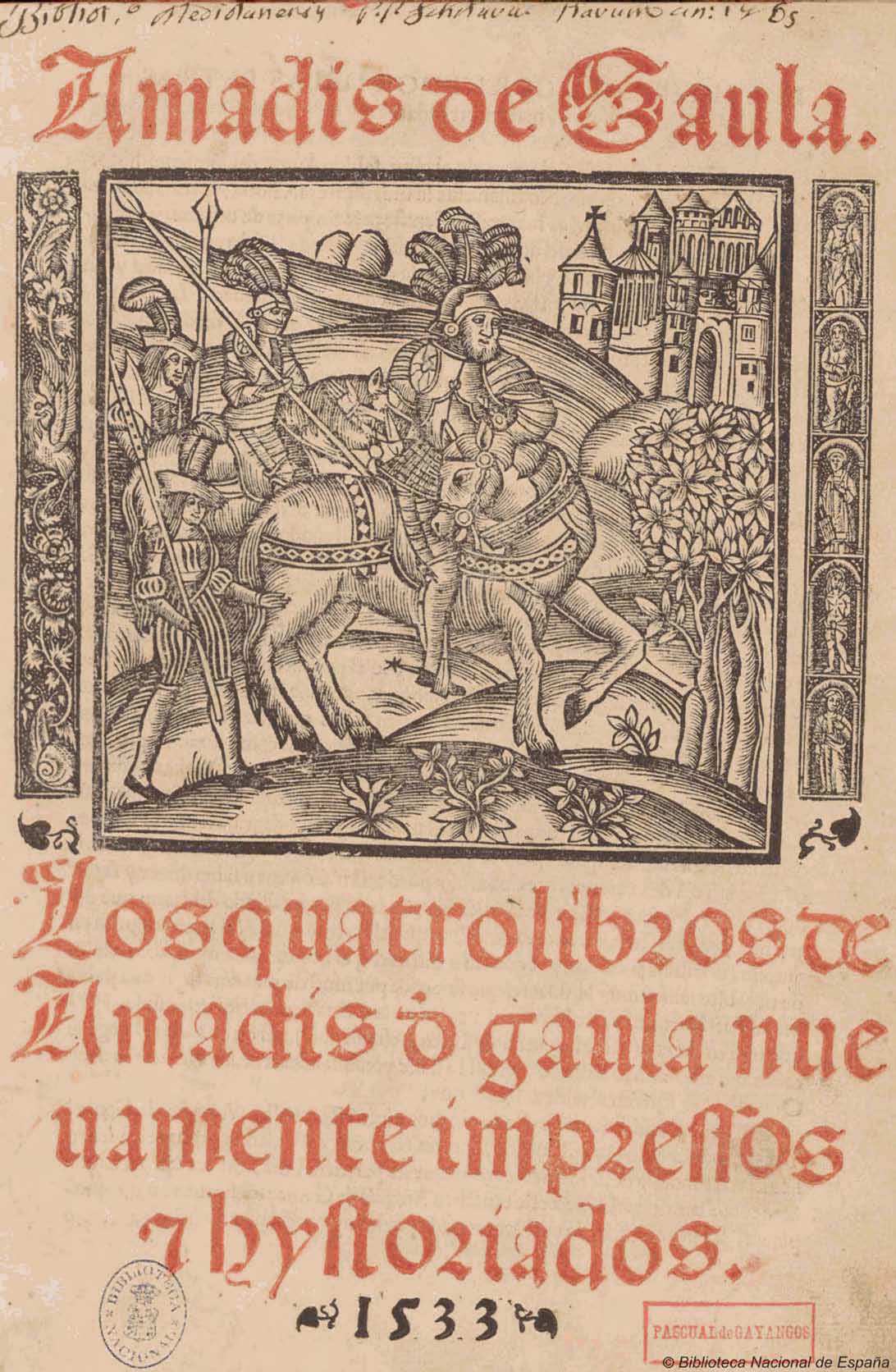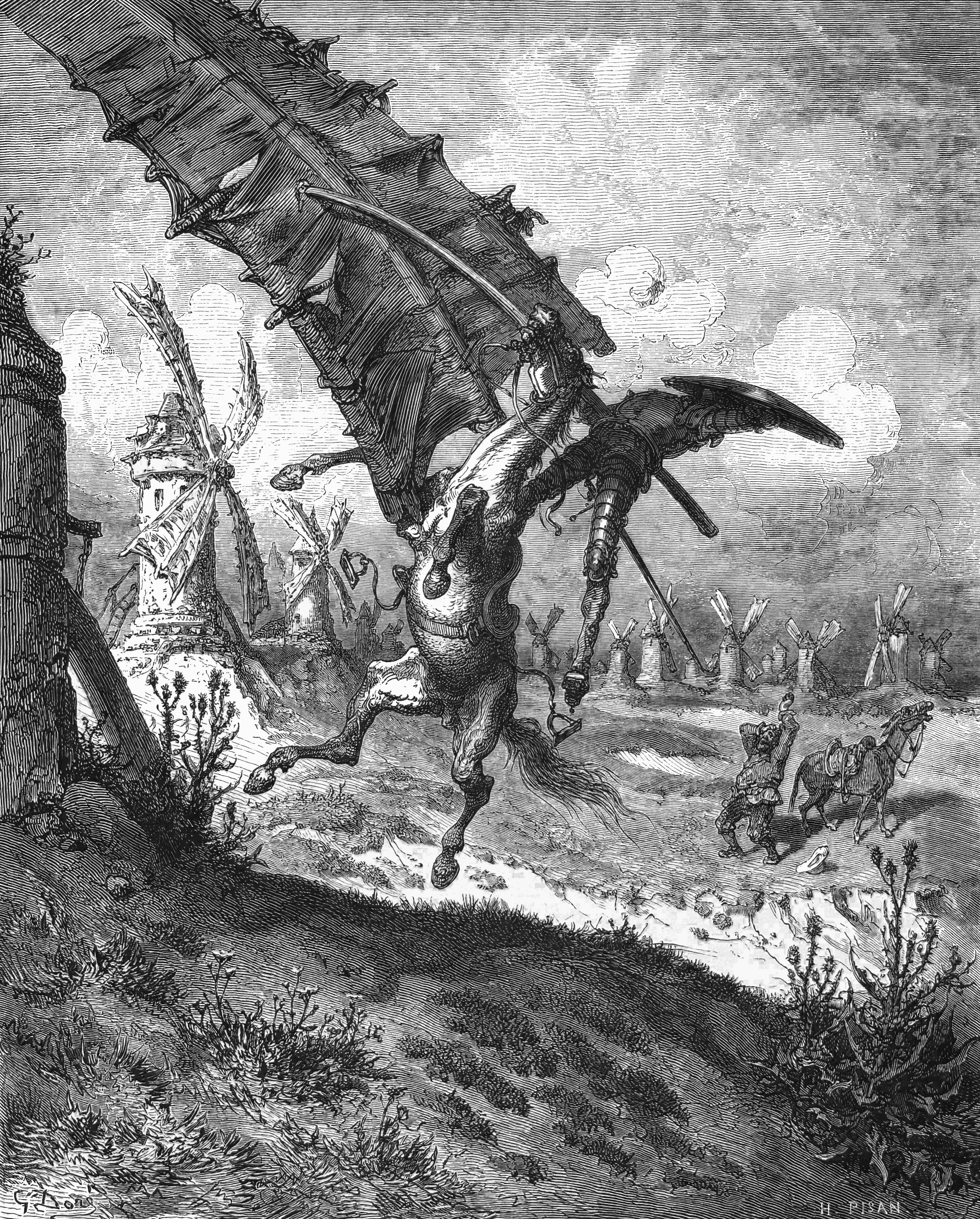|
Knight Errant
A knight-errant (or knight errant) is a figure of medieval Chivalric romance, chivalric romance literature. The adjective '':wikt:errant, errant'' (meaning "wandering, roving") indicates how the knight-errant would wander the land in search of adventures to prove his chivalry, chivalric virtues, either in knightly duels (''pas d'armes'') or in some other pursuit of courtly love. Description The knight-errant is a character who has broken away from the world of his origin, in order to go off on his own to right wrongs or to test and assert his own chivalric ideals. In medieval Europe, knight-errantry existed in literature, though fictional works from this time often were presented as non-fiction. The template of the knight-errant were the heroes of the Round Table of the Arthurian cycle such as Gawain, Lancelot, and Percival. The quest wikt:par excellence, ''par excellence'' in pursuit of which these knights wandered the lands is that of the Holy Grail, such as in ''Perceval, the S ... [...More Info...] [...Related Items...] OR: [Wikipedia] [Google] [Baidu] [Amazon] |
Holy Grail
The Holy Grail (, , , ) is a treasure that serves as an important motif in Arthurian literature. Various traditions describe the Holy Grail as a cup, dish, or stone with miraculous healing powers, sometimes providing eternal youth or sustenance in infinite abundance, often guarded in the custody of the Fisher King and located in the hidden Grail castle. By analogy, any elusive object or goal of great significance may be perceived as a "holy grail" by those seeking such. A mysterious "grail" (Old French: ''graal'' or ''greal''), wondrous but not unequivocally holy, first appears in '' Perceval, the Story of the Grail'', an unfinished chivalric romance written by Chrétien de Troyes around 1190. Chrétien's story inspired many continuations, translators and interpreters in the later-12th and early-13th centuries, including Wolfram von Eschenbach, who portrayed the Grail as a stone in ''Parzival''. The Christian, Celtic or possibly other origins of the Arthurian grail trope are ... [...More Info...] [...Related Items...] OR: [Wikipedia] [Google] [Baidu] [Amazon] |
Burlesque
A burlesque is a literary, dramatic or musical work intended to cause laughter by caricaturing the manner or spirit of serious works, or by ludicrous treatment of their subjects."Burlesque" ''Oxford English Dictionary'', , accessed 16 February 2011 The word is loaned from French and derives from the Italian ', which, in turn, is derived from the Italian ' – a joke, ridicule or mockery. Burlesque overlaps with , and [...More Info...] [...Related Items...] OR: [Wikipedia] [Google] [Baidu] [Amazon] |
Miguel De Cervantes
Miguel de Cervantes Saavedra ( ; ; 29 September 1547 (assumed) – 22 April 1616 Old Style and New Style dates, NS) was a Spanish writer widely regarded as the greatest writer in the Spanish language and one of the world's pre-eminent novelists. He is best known for his novel ''Don Quixote'', a work considered as the first modern novel. The novel has been labelled by many well-known authors as the "best book of all time" and the "best and most central work in world literature". Much of his life was spent in relative poverty and obscurity, which led to many of his early works being lost. Despite this, his influence and literary contribution are reflected by the fact that Spanish is often referred to as "the language of Cervantes". In 1569, Cervantes was forced to leave Spain and move to Rome, where he worked in the household of a Cardinal (Catholic Church), cardinal. In 1570, he enlisted in a Spanish Marine Infantry, Spanish Navy infantry regiment, and was badly wounded at th ... [...More Info...] [...Related Items...] OR: [Wikipedia] [Google] [Baidu] [Amazon] |
Don Quixote
, the full title being ''The Ingenious Gentleman Don Quixote of La Mancha'', is a Spanish novel by Miguel de Cervantes. Originally published in two parts in 1605 and 1615, the novel is considered a founding work of Western literature and is often said to be the first modern novel. The novel has been labelled by many well-known authors as the "best novel of all time" and the "best and most central work in world literature". ''Don Quixote'' is also one of the List of literary works by number of translations, most-translated books in the world and one of the List of best-selling books, best-selling novels of all time. The plot revolves around the adventures of a member of the lowest nobility, an Hidalgo (nobility), hidalgo from La Mancha named Alonso Quijano, who reads so many chivalric romances that he loses his mind and decides to become a knight-errant () to revive chivalry and serve his nation, under the name . He recruits as his squire a simple farm labourer, Sancho Panza, wh ... [...More Info...] [...Related Items...] OR: [Wikipedia] [Google] [Baidu] [Amazon] |
Iberian Peninsula
The Iberian Peninsula ( ), also known as Iberia, is a peninsula in south-western Europe. Mostly separated from the rest of the European landmass by the Pyrenees, it includes the territories of peninsular Spain and Continental Portugal, comprising most of the region, as well as the tiny adjuncts of Andorra, Gibraltar, and, pursuant to the traditional definition of the Pyrenees as the peninsula's northeastern boundary, a small part of France. With an area of approximately , and a population of roughly 53 million, it is the second-largest European peninsula by area, after the Scandinavian Peninsula. Etymology The Iberian Peninsula has always been associated with the River Ebro (Ibēros in ancient Greek and Ibērus or Hibērus in Latin). The association was so well known it was hardly necessary to state; for example, Ibēria was the country "this side of the Ibērus" in Strabo. Pliny the Elder, Pliny goes so far as to assert that the Greeks had called "the whole of the peninsula" Hi ... [...More Info...] [...Related Items...] OR: [Wikipedia] [Google] [Baidu] [Amazon] |
Middle Low German
Middle Low German is a developmental stage of Low German. It developed from the Old Saxon language in the Middle Ages and has been documented in writing since about 1225–34 (). During the Hanseatic period (from about 1300 to about 1600), Middle Low German was the leading written language in the north of Central Europe and served as a lingua franca in the northern half of Europe. It was used parallel to medieval Latin also for purposes of diplomacy and for deeds. Terminology While ''Middle Low German'' (MLG) is a scholarly term developed in hindsight, speakers in their time referred to the language mainly as (Saxon) or (the Saxon language). In contrast to Latin as the primary written language, speakers also referred to discourse in Saxon as speaking/writing , i.e. 'clearly, intelligibly'. This contains the same root as 'German' (cf., High German: , Dutch ( archaically ''N(i)ederduytsche'' to mean the contemporary version of the Dutch language) both from Proto-Germanic ... [...More Info...] [...Related Items...] OR: [Wikipedia] [Google] [Baidu] [Amazon] |
Middle English
Middle English (abbreviated to ME) is a form of the English language that was spoken after the Norman Conquest of 1066, until the late 15th century. The English language underwent distinct variations and developments following the Old English period. Scholarly opinion varies, but the University of Valencia states the period when Middle English was spoken as being from 1150 to 1500. This stage of the development of the English language roughly coincided with the High Middle Ages, High and Late Middle Ages. Middle English saw significant changes to its vocabulary, grammar, pronunciation, and orthography. Writing conventions during the Middle English period varied widely. Examples of writing from this period that have survived show extensive regional variation. The more standardized Old English literary variety broke down and writing in English became fragmented and localized and was, for the most part, being improvised. By the end of the period (about 1470), and aided by the movabl ... [...More Info...] [...Related Items...] OR: [Wikipedia] [Google] [Baidu] [Amazon] |
Middle French
Middle French () is a historical division of the French language that covers the period from the mid-14th to the early 17th centuries. It is a period of transition during which: * the French language became clearly distinguished from the other competing Oïl languages, which are sometimes subsumed within the concept of Old French () * the French language was imposed as the official language of the Kingdom of France in place of Latin and other Oïl and Occitan languages * the literary development of French prepared the vocabulary and grammar for the Classical French () spoken in the 17th and 18th centuries. It is the first version of French that is largely mutual intelligibility, intelligible to Modern French, contrary to Old French. History The most important change found in Middle French is the complete disappearance of the noun declension system, which had been underway for centuries. There was no longer a distinction between nominative and oblique case, oblique forms of nou ... [...More Info...] [...Related Items...] OR: [Wikipedia] [Google] [Baidu] [Amazon] |
Late Middle Ages
The late Middle Ages or late medieval period was the Periodization, period of History of Europe, European history lasting from 1300 to 1500 AD. The late Middle Ages followed the High Middle Ages and preceded the onset of the early modern period (and in much of Europe, the Renaissance). Around 1350, centuries of prosperity and growth in Europe came to a halt. A series of famines and Plague (disease), plagues, including the Great Famine of 1315–1317 and the Black Death, reduced the population to around half of what it had been before the calamities. Along with depopulation came social unrest and endemic warfare. Kingdom of France, France and Kingdom of England, England experienced serious peasant uprisings, such as the Jacquerie and the Peasants' Revolt, as well as over a century of intermittent conflict, the Hundred Years' War. To add to the many problems of the period, the unity of the Catholic Church was temporarily shattered by the Western Schism. Collectively, those events ar ... [...More Info...] [...Related Items...] OR: [Wikipedia] [Google] [Baidu] [Amazon] |
Courtier
A courtier () is a person who attends the royal court of a monarch or other royalty. The earliest historical examples of courtiers were part of the retinues of rulers. Historically the court was the centre of government as well as the official residence of the monarch, and the social and political life were often completely mixed together. Background Monarchs very often expected the more important nobles to spend much of the year in attendance on them at court. Not all courtiers were noble, as they included clergy, soldiers, clerks, secretaries, agents and middlemen with business at court. All those who held a court appointment could be called courtiers but not all courtiers held positions at court. Those personal favourites without business around the monarch, sometimes called the camarilla, were also considered courtiers. As social divisions became more rigid, a divide, barely present in Antiquity or the Middle Ages, opened between menial servants and other classes at c ... [...More Info...] [...Related Items...] OR: [Wikipedia] [Google] [Baidu] [Amazon] |







